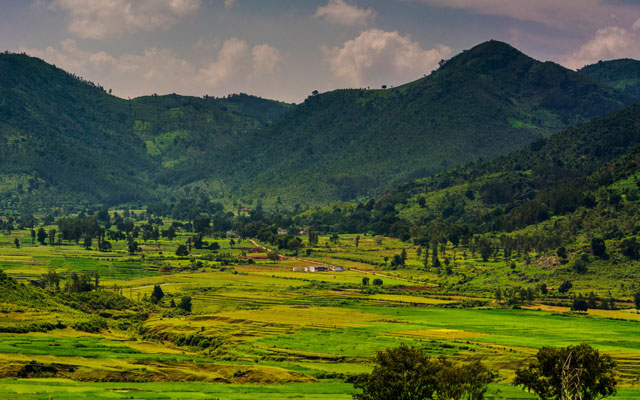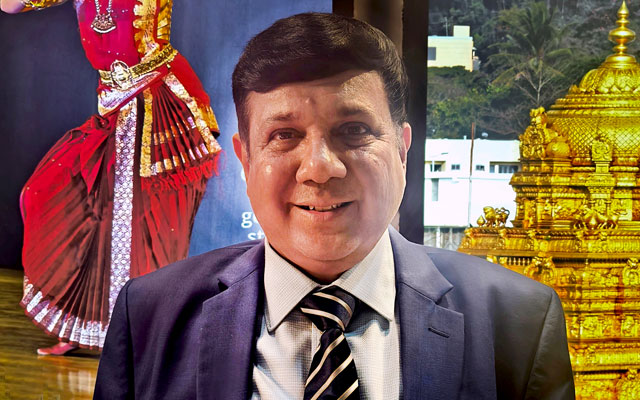Andhra Pradesh targets international tourism with new policy and global promotion
Andhra Pradesh is ramping up its global tourism outreach with a renewed focus on international visibility, investment incentives and untapped segments like Buddhist heritage, beach experiences and wellness travel.
The state government’s roadmap is backed by the newly announced Tourism Policy 2024-2029. The policy aligns with the Swarna Andhra Vision 2047, a long-term plan to transform the state into a US$2 trillion economy with a targeted 15 per cent annual Gross State Domestic Product growth. Tourism is pegged as a crucial driver in this transformation.

Ajay Jain, special chief secretary for tourism, Government of Andhra Pradesh said: “A key highlight of the new policy is that the tourism sector has now officially been granted industry status. This means all benefits applicable to industrial ventures from subsidies to infrastructure support are now extended to hospitality and tourism players. This move has already started attracting leading hotel chains and private investments to Andhra Pradesh.”
While Andhra Pradesh ranks among top five domestic tourist destinations in India, thanks to religious hubs like Tirupati, its international numbers remain low.
Rajeev Kale, president and country head, holidays, MICE, Visa, Thomas Cook (India) Limited remarked: “Andhra Pradesh’s tourism demand is driven by its spiritual circuit, beaches and emerging cruise tourism via Visakhapatnam. Tirupati remains a pilgrimage powerhouse, while destinations like Araku Valley and the coastal belt are drawing interest from leisure travellers. While Andhra Pradesh has a strong foothold in domestic tourism, international tourist arrivals are still in a nascent stage. However, with its unique offerings like Buddhist heritage, coastal beauty, spiritual destinations and offbeat experiences, the state holds substantial potential to attract global travellers.”
Jain candidly admitted that many international tourists do not even know where Andhra is on the map. The first challenge is visibility. To address this, the state is actively participating in global travel exhibitions such as ITB Berlin, WTM London, ATM Dubai, and others. A focused B2B approach is also being pursued, with plans to collaborate closely with Indian and foreign tour operators to integrate Andhra Pradesh into longhaul itineraries.
S D Nandakumar, president and country head, holidays and corporate tours, SOTC Travel Limited, said: “While the domestic segment remains strong, international footfall can be significantly boosted through focused efforts especially in promoting the state’s Buddhist heritage and wellness offerings. We are keen to work with the government to promote the hidden gems of Andhra Pradesh.”
In fact, with historical Buddhist sites like Nagarjunakonda, Amaravati, and Thotlakonda, Andhra Pradesh is positioning itself as a natural extension to India’s well-established Buddhist trail.
Jain pointed out: “Many pilgrims from Japan, Thailand and Vietnam already visit Bodh Gaya and Sarnath. Our goal is to create awareness about Andhra’s Buddhist legacy and include it in their itineraries.”
According to The Federation of Hotel & Restaurant Associations of India (FHRAI) the state’s facilitative business environment and proactive policy measures are strong foundations that can further unlock international tourism potential.

“The hospitality landscape in Andhra Pradesh has been holding steady, mainly supported by domestic travel. Occupancy levels have been encouraging with visible improvement in recent months. Room rates have also started to rise, especially in places like Visakhapatnam and Tirupati where pilgrimage and business travel continue to drive demand. International tourism, however, remains limited. The potential is certainly there, particularly along the coast and at heritage sites, but improved air connectivity and stronger international promotion are essential,” said FHRAI president K Syama Raju.
Presently, the supply of branded hotels in Andhra Pradesh is relatively modest and concentrated in key cities like Vizag, Vijayawada and Tirupati, primarily catering to the mid-range segment.
“Several hotel chains are exploring opportunities, and if upcoming projects progress as planned, the state’s tourism infrastructure will see a significant boost. The state government has also been facilitative and taking proactive initiatives in Andhra Pradesh,” added Raju.
Beyond religious tourism, the state is also eyeing beach tourism, backwater experiences in regions like Konaseema and wellness tourism around Visakhapatnam where luxury resorts and Ayurvedic retreats are emerging.
“Adventure tourism is another growing focus. We have the Grand Canyon of India at Gandikota and lush destinations like Araku Valley that offer trekking, camping and other outdoor experiences,” added Jain.
Agoda data shows a 13 per cent increase in international accommodation searches to Andhra Pradesh between January and May 2025 compared to 2024. Much of this demand is driven by interest from the US, Malaysia and Singapore, accounting for 50 per cent of all inbound searches.
“Notably, the US remained as the top source market in both years, while Andhra Pradesh’s appeal broadened in 2025 with Taiwan entering the top five – overtaking the UK. Japan also emerged as a standout growth market, with searches nearly doubling year-on-year. This growth underscores the state’s rising visibility and attractiveness among new international traveller segments,” said Gaurav Malik, country director India, Sri Lanka and Nepal at Agoda.
In terms of traveller behaviour, Agoda is seeing trends where visitors to Andhra Pradesh are opting for shorter trips, often for quick getaways or business travel compared to other destinations across India.
“However, the growing diversity of international interest suggests that the state is an emerging destination for international holidays and is on the radar globally. As the state continues to invest in spiritual, heritage, and cultural tourism, there is a real opportunity to evolve beyond shorter local visits and attract a broader mix of travellers,” concluded Malik.











